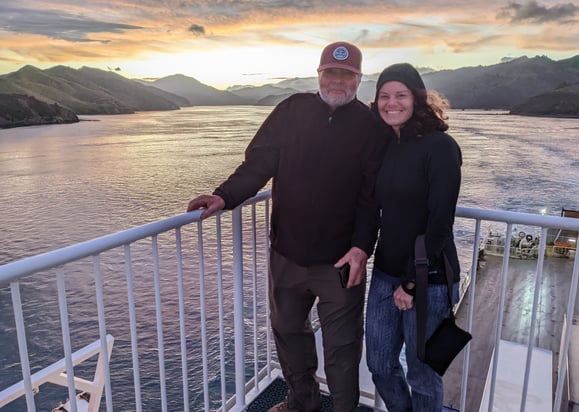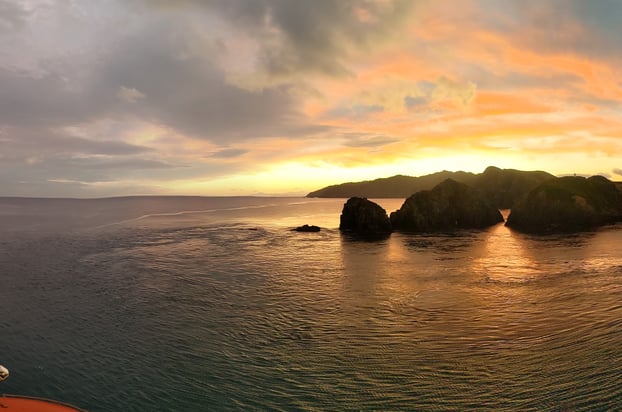On the Road and Rain in South island New Zealand
After getting off the Milford Track, we heading north past big beautiful lakes to Christchurch, before boarding a ferry the north island.
COUNTRIES
After successfully meeting up with my folks following our boat ride off the Milford Track, we aimed the car back north towards a historic gold rush town called Arrowtown.1 Along the winding 2-lane roads we saw lots of sheep and even more fields of purple, pink, and yellow lupines. Having read Miss Rumphius, the lupine lady picture book as a kid, I was fully enchanted to see these flowers all along the route!
It was still light outside (thanks to extremely long days so far south in the world) when we arrived at our cute "cottage motel" in Arrowtown around 8:00PM. My mom, Shadie, and I rallied to go out for a lovely tapas meal on main street in the historic town center while my dad relaxed at the cottage and munched on leftovers from our cardboard cooler box.
We the hit the road again the next day, and stopped for lunch along the shores of Lake Wanaka. This lake is the fourth largest in New Zealand, at roughly 200km squared sits in a glacier-carved basin, its waters a rich blue-green. While we weren't able to stay for the night, its also a famous "dark skies" site, as (like much of New Zealand's south island) there's not much urban population causing light pollution.
Another two hours of driving took us to Christchurch. With a population of 380,000, Christchurch is roughly the size of Aurora (Denver's suburb to the east) but is the largest city by far in the South Island and the second-largest city by urban area population in the whole country. I list all these numbers to emphasize how truly small, out of the way, largely rural or wilderness area makes up this country! Throughout our drives on the South Island, we rarely encountered a road wider than two lanes, nearly all intersections were round-abouts, and every town was sleepy.
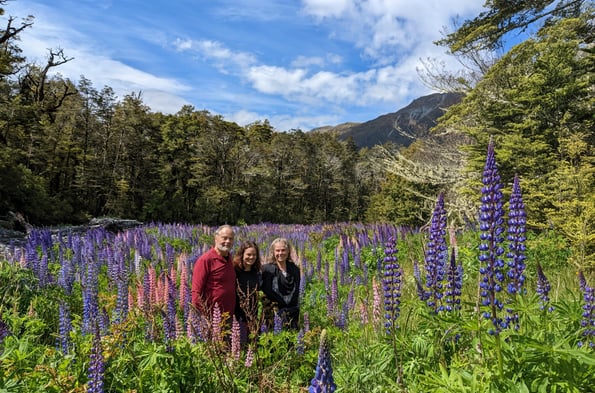

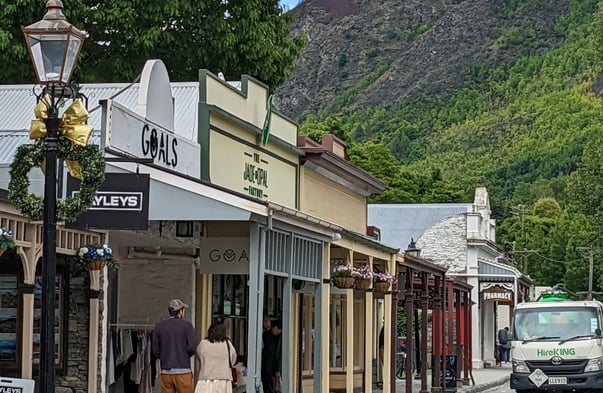

Footnotes:
1) Fun fact: Arrowtown is the filming location for a fairly famous scene in Lord of the Rings. The scene is at Arrowtown's Ford of Bruinen, also known as the Ford of Rivendell. In this scene, Arwen races on horseback away from the Nazgul, and uses magic to raise the waters (looking like waves in the shape of horse) of the ford to flood to flood them downriver.
2) The earthquake killed 185 people, far from among the worst globally and only the 5th deadliest in New Zealand history, but the physical damage to Christchurch was extreme; billions of dollars in damages and ultimately a mind-boggling 88% of CBD structures were ultimately lost. Interestingly, in talking with a good friend (shout-out Chiara) who is an earthquake engineer, the industry now thinks more buildings were deemed irrevocably damaged than probably should have been so perhaps the buildings total losses could have been lower if modern evaluation methods had been applied.
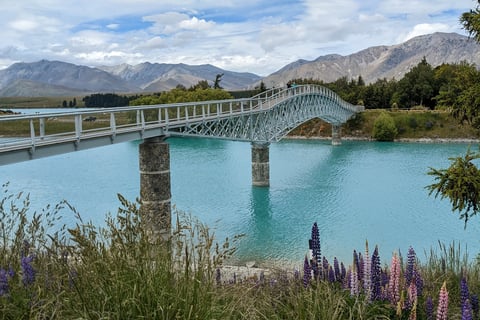

Our Airbnb in Christchurch was a lovely and commodious apartment in a complex interestingly situated along a pedestrian plaza that housed the main station for the city's vintage but still operational tram main station. We didn't end up riding the tram (a bit too pricey for us!) but it was delightful to see it load up and chug off around downtown. Our other observation as we wandered around the main part of town was how it felt a bit empty and a bit low slung. Historic downtown buildings were set next to giant empty parking lots or vacant green lawns. Other lots were fenced as if awaiting construction projects that were a long time coming. It wasn't until later, that we realized all these lots were the still very visible scars of destruction following a devastating earthquake in 2011.
One of the most interesting parts of our visit was actually to visit Quake City, the museum documenting Christchurch's long history with earthquakes, what happened in the 2011 earthquake and its aftermath, and how its rebuilt. The earthquake, was rated a 6.2 magnitude on the richter scale (out of 10) but was centered just a few miles from the central business district and was relatively shallow, making it one of the more destructive2 earthquakes in recent history. The museum included interviews with about a dozen residents regarding their experiences in the earthquake; some who had been caught in steeples of churches or high rises waiting rescue, others conducting rescues, and still others racing back to town to discover their loved ones had not survived. The same residents had been interviewed a decade later (2021) to better understand how their lives had evolved since the event and it was sad to hear most had chosen to leave Christchurch permanently.
While Quake City was perhaps the most emotionally provocative museum, we also enjoyed the Canterbury Museum, especially with its history of unique native flora and fauna of New Zealand and a great introductory information on the Maori people. The Arts Centre and Botanic Gardens were also enjoyable and made it clear that, despite the earthquakes, this small city provides a great quality of life and punches above its weight in cultural attractions.
We also had the chance to meet up with a colleague, Shane, in Christchurch, who does transportation work for the larger geographic area. It was great to chat with him and his family about their experience (as Americans) living abroad and about Christchurch specifically. They clued us in to a great food market hall (like have been popping up all over the US in the last decade) where we had several lovely meals (mostly Asian rather than any local cuisine delights) and beers.
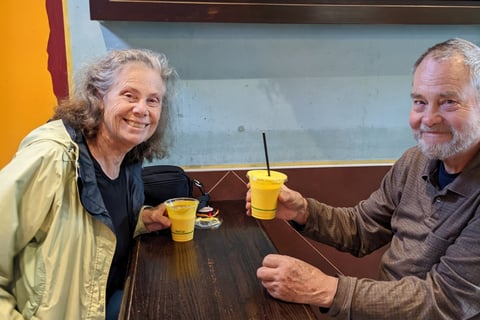

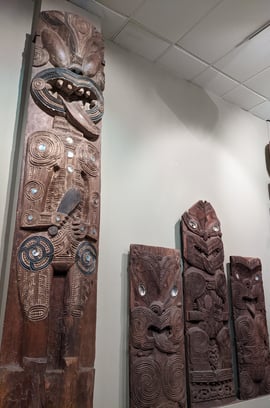

After two days in Christchurch, we were back on the road again bound north for the top of the South Island, brushing the coast all along the way. We had several bouts of rain and grey in the previous days, so were delighted to have warm and sunny weather for our activity in Kaikoura, a small town along the eastern coast. We enjoyed a quick lunch from a food truck and live music on this small beach town's main street before heading out on a shore walk along its cape. The walk led us adjacent to an enormous nesting colony of gulls (possibly technically Cooke's petrels birds) and a delightful colony of sunbathing seals. Mom and I enjoyed also looking up a handful of additional bizarre looking birds, unique to New Zealand like the pied shag and variable oystercatcher.
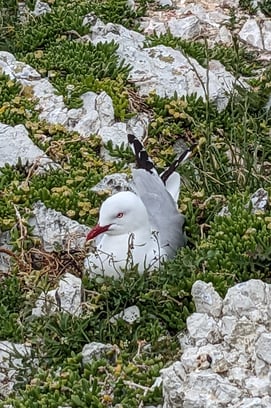

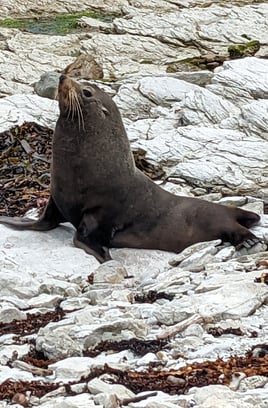

We hopped back into the car and continued driving north on the wrong side of the road through hilly farmland until finally arriving in Picton. Here a ferry departs a few times a day across the Cook Strait to the north island. We queued up behind other cars and waited for about an hour as they loaded up semi-trucks and other gear before driving our car into the boats underbelly. We climbed up several stories to the boats main lounge, and dined on mediocre boat fare as the ferry began wending its way through the maze of narrow waterways between the penninsula and islands that make up Cooke's Straight. My dad and I headed up several mores stories to the top deck of the boat as the sun began to set, leaving behind a burst of colors just as we left behind the last beautiful cliffs of the South Island, treating us to a striking a ocean view.
